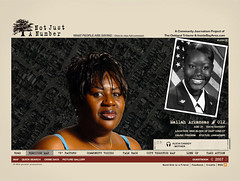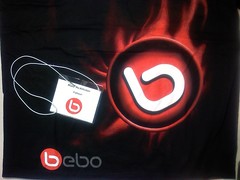I had the pleasure of interviewing Sean Connelly and Katy Newton for YDN Theater recently with YDN videographer Ricky Montalvo. They created the amazing (and award-winning) crime data mashup Not Just A Number in partnership with The Oakland Tribune.
 After getting tired of watching the homicide count for 2006 climb higher and higher, they decided to humanize the issue and talk to the families of the victims directly. They wanted to expose the story beneath the number and give a platform upon which the community could make the issue real.
After getting tired of watching the homicide count for 2006 climb higher and higher, they decided to humanize the issue and talk to the families of the victims directly. They wanted to expose the story beneath the number and give a platform upon which the community could make the issue real.
Statistics can tell effective stories, but death and loss reach emotional depths beyond the power of any numerical exploration.
Sean and Katy posted recordings of the families talking about the sons, daughters, sisters and brothers that they lost. They integrated family photos, message boards, articles and more along with the interactive homicide map on the site to round out the experience making it much more human than the traditional crime data mashup.
Here is the video (7 min.):
I also asked them if they had trouble getting data to make the site, and they said the Oakland Tribune staff were very supportive. There weren’t any usable open data sets coming out of the city, so they had to collect and enter everything themselves.
This, of course, is a very manual process. Given the challenge of getting the data Sean and Katy didn’t see how the idea could possibly scale outside of the city of Oakland.
SOmebody needs to take that on as a challenge.
I’m hopeful that efforts like Not Just A Number and the Open Government Data organization will be able to surface why it’s important for our government to open up access to the many data repositories they hold. And if the government won’t do it, then it should be the job of journalists and media companies to surface government data so that people can use it in meaningful ways.
This is a great example of how the Internet can empower people who otherwise have no voice or audience despite having profound stories to tell.




